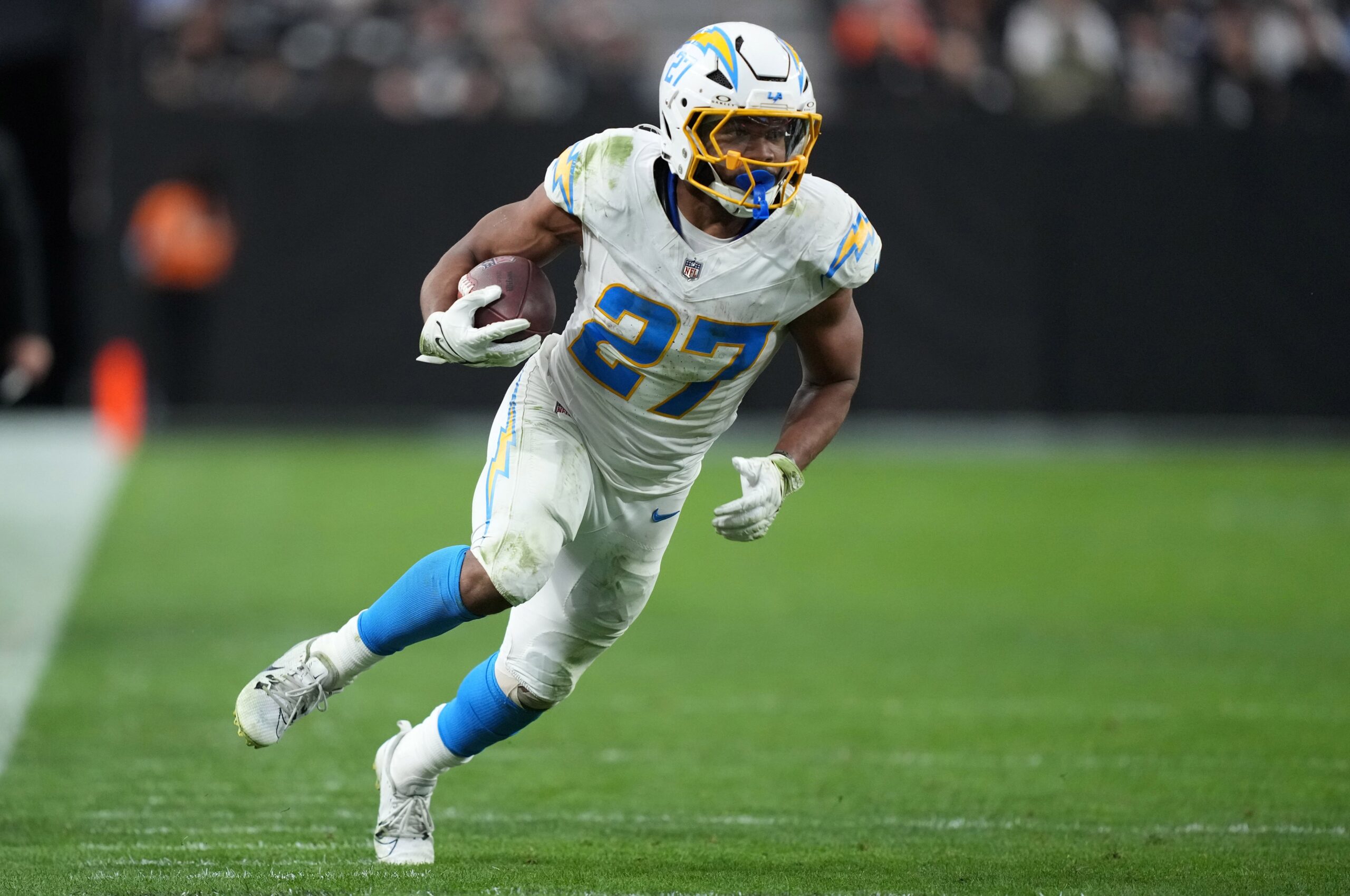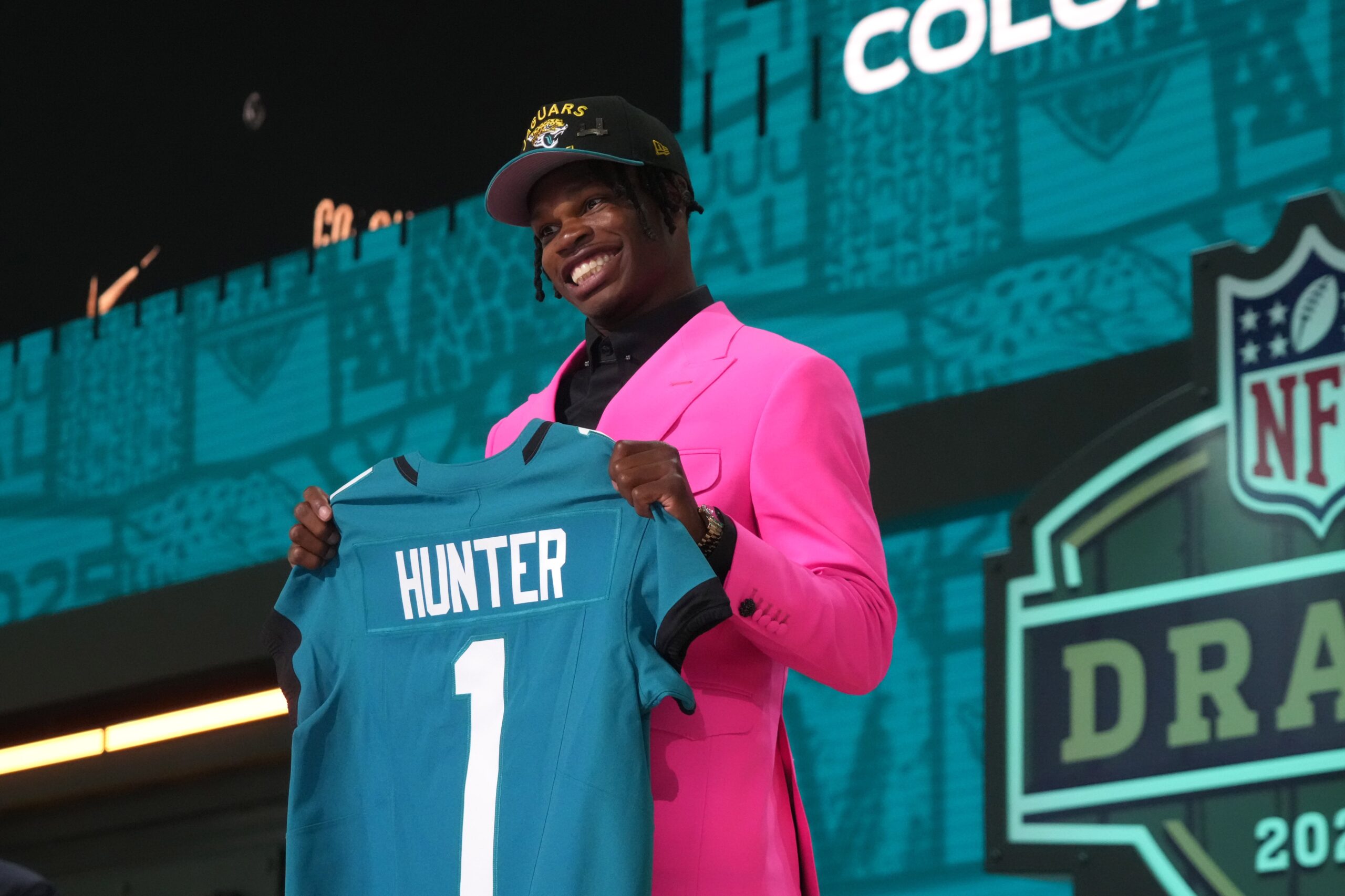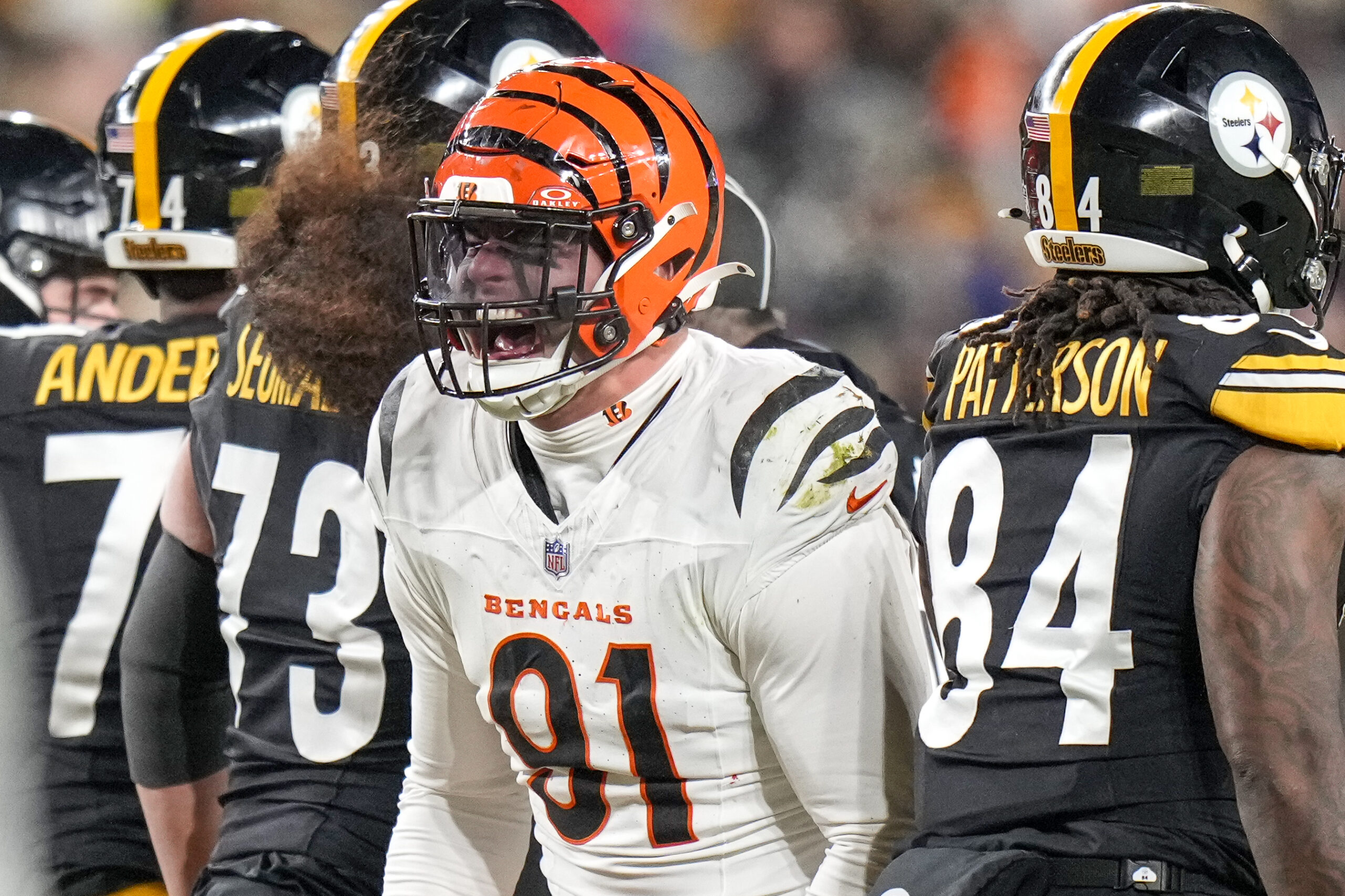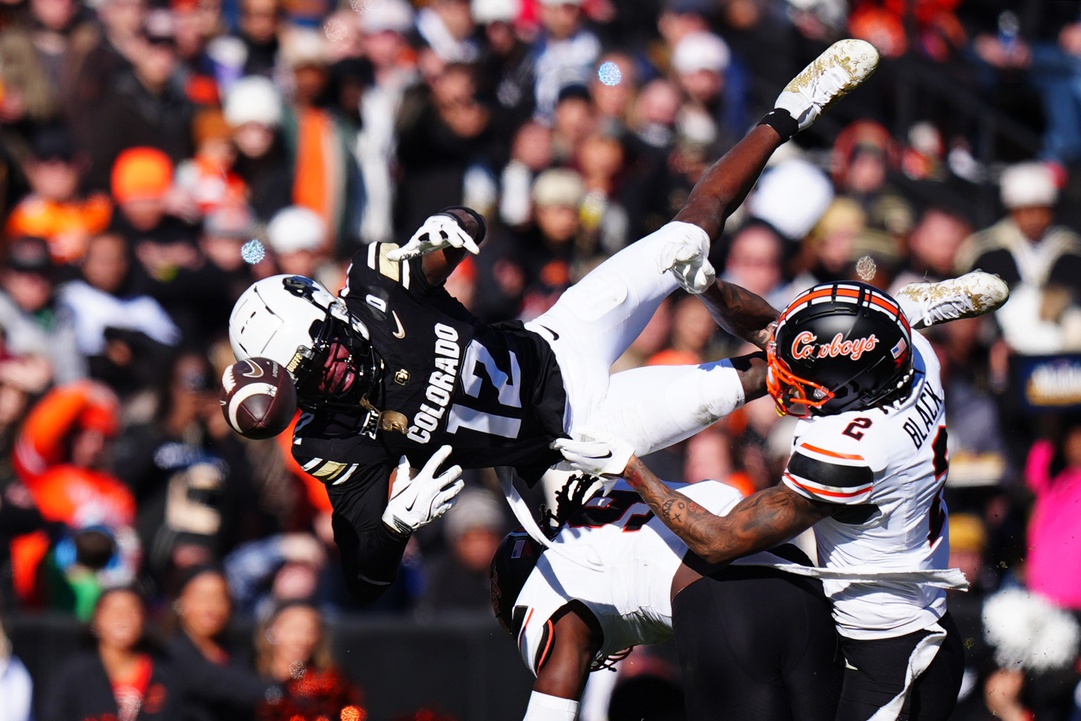NFL Analysis
2/17/24
8 min read
Is Baker Mayfield The NFL's Next $40-Million Per Year Quarterback?
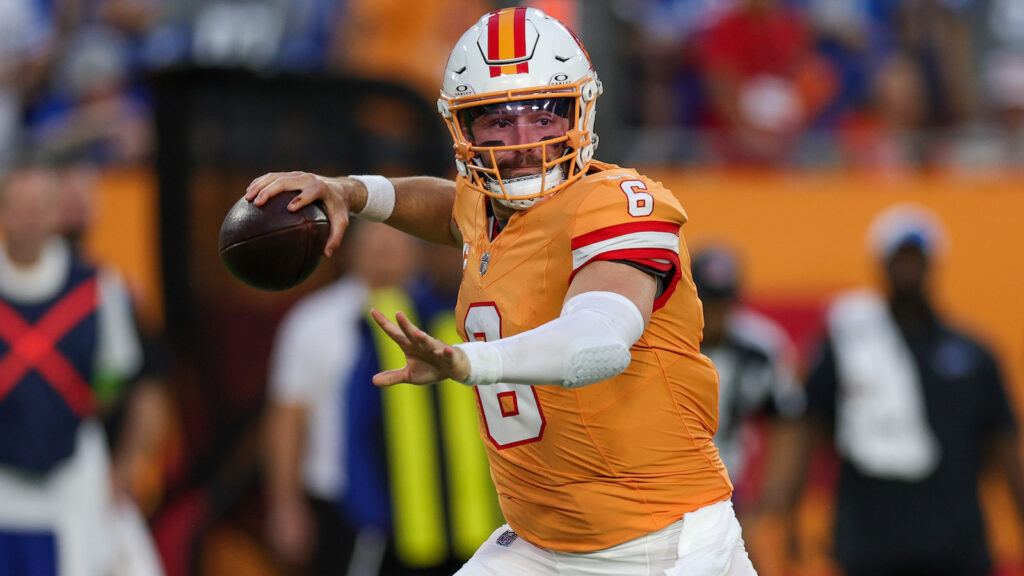
Baker Mayfield had a bounceback 2023 season. After he spent 2022 with the Carolina Panthers and Los Angeles Rams, Mayfield signed a one-year, $4 million contract with the Tampa Bay Buccaneers.
When that deal was signed, Mayfield wasn’t given the starting job. He was signed to compete with Kyle Trask in training camp — yes, that was a thing that happened.
But Mayfield won the job, and things went pretty well for the Buccaneers and the quarterback. Tampa Bay went to the playoffs as NFC South winners, and Mayfield was named the Most Improved Player by the PFWA.
Mayfield was a solid addition to a team in transition after Tom Brady retired. The Buccaneers got younger and cheaper in some areas while they stayed competitive enough with the veterans on the roster.
Tampa Bay had the fourth-youngest offense and the 13th-youngest defense by snap-weighted age in 2023. That came while the Buccaneers had the third-cheapest offense and seventh-cheapest defense by positional spending, per Over The Cap.
Getting the most out of a roster with a cheap quarterback contract is a different game than building around a more expensive veteran deal. That’s what the Buccaneers — or any other team — will face with interest in Mayfield, who will get more than that one-year, $4 million contract this offseason.
The question, of course, is how much more and what is Mayfield actually worth. To answer that, let’s look at Mayfield’s 2023 and how the quarterback market has shaped up over the past few seasons.
KEEPING IT ALIVE 😤
— Tampa Bay Buccaneers (@Buccaneers) January 21, 2024
📺: #TBvsDET on NBC pic.twitter.com/PvH8l0gVrU
Where Did Mayfield Improve?
To understand where Mayfield’s market might fall, we need to better understand his 2023 season. He ranked 19th in EPA per play, per TruMedia, and 18th in ESPN’s QBR.
That’s a fine place to be. However, despite the improvement, it’s not as if Mayfield was pushing the fringe of the top 10. Even when the Buccaneers went 5-1 to end the season, he was still 19th in EPA per play.
Much of that was due to Mayfield’s play on early downs, where he ranked 30th of 32 qualified quarterbacks in EPA per play. There weren’t many massive mistakes for Mayfield. He took a lot of sacks, but his overall sack rate was about league average because of his volume of dropbacks, and the same goes for interceptions.
How often he pushed the ball down the field got him into trouble. That will always be something Mayfield tries to do, but it didn’t completely click on early downs.
His rate of throws that traveled at least 20 air yards was the third-highest among quarterbacks on early downs. However, Mayfield was 23rd in completion percentage on those throws (32.1 percent) and had the fourth-highest rate of those passes charted as inaccurate (41.5 percent).
The plays that hit were valuable, but the volume of negative plays was a detriment to the offense.
That shifted on third downs when Mayfield was one of the most efficient quarterbacks in the league — fourth in EPA per play. This was also due to his willingness to push the ball down the field, as Mayfield had the sixth-highest aDOT on third downs.
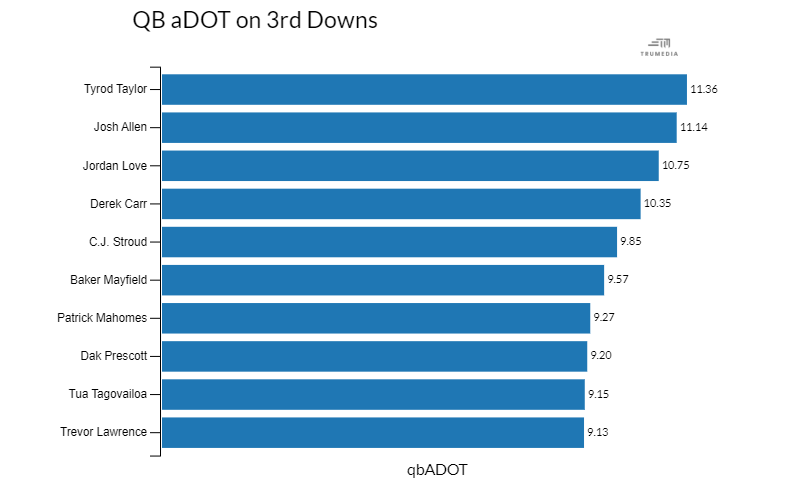
Instead of deep shots, Mayfield ramped up throws to the intermediate area from 11-19 air yards. His 24.4 percent rate of throws to that part of the field was the fifth-highest among quarterbacks, and he was ninth in EPA per play on those attempts.
The confidence Mayfield displayed allowed him to stay in the pocket and make those kinds of throws. Previously, he had been a quarterback eager to bail from the pocket to try to make a play.
This season, Mayfield was in the pocket 86 percent of the time, the seventh-highest rate in the league. He’s more athletic than the likes of Jared Goff, Kirk Cousins and Mac Jones, and the names above him, but keeping Mayfield in the pocket reined in his tendency to do too much.
While he was pushing the ball downfield, there was also an emphasis on getting the ball out quickly, which increased efficiency in the short area of the field.
Mayfield was 10th in EPA per play on throws from 1-10 air yards and threw to the middle of the field with more consistency than he previously in his career.
Here is an overlay of Mayfield’s success rate throwing to each area of the field during the past four seasons.

His 2023 season is easily his best since 2020, but there are also important caveats. Mayfield’s 2020 was in a highly-protected play-action-heavy scheme under Kevin Stefanski with the Cleveland Browns. So much of that success came on bootlegs and schemed-up openings that didn’t ask Mayfield to do much to lift the offense.
A much bigger load was put on the quarterback’s shoulders in the Tampa Bay offense under Dave Canales, and Mayfield carried it.
Mayfield’s numbers would look even better this past season if the Buccaneers were better at throws behind the line of scrimmage. The Buccaneers were great at screens — Mayfield was second in EPA per play on them — but Mayfield had the lowest rate on screen passes among quarterbacks (6.9 percent). Other throws behind the line of scrimmage were swing passes or checkdowns, which were inefficient.
If we just look at throws that went past the line of scrimmage, Mayfield was 12th in EPA per play.
What Deal Makes Sense?
The quarterback market is one to watch this offseason. It’s a strong draft class, but even with three highly-regarded quarterbacks, all the teams at the top could use one, so there might not be too much movement or a surprise team swooping in with a trade.
On the free agent market, Cousins is the top option, but he’s about to turn 36 and is coming off an Achilles tear. That leaves Mayfield as the second-best free agent option at the position.
>> READ MORE: Top 100 Free Agent Rankings
For a few years, there was no mid-tier quarterback market. Quarterbacks were either getting top-of-the-market contracts or getting largely ignored. That’s changed a bit recently.
The two contracts that come to mind are the deals given to Daniel Jones and Geno Smith, but even then, there is a significant difference in investment.
Jones received a four-year, $160 million contract from the New York Giants that includes $104 million guaranteed and has $112.5 million in the first three years — the $40 million average is tied for 10th, and the three-year cash ranks 13th.
Top 10 QB Contracts By AAV
| Rank | Team | Contract AAV |
| 1. Joe Burrow | Bengals | $55 Million |
| 2. Justin Herbert | Chargers | $52.5 Million |
| 3. Lamar Jackson | Ravens | $52 Million |
| 4. Jalen Hurts | Eagles | $51 Million |
| 5. Russell Wilson | Broncos | $48.5 Million |
| 6. Kyler Murray | Cardinals | $46.1 Million |
| 7. Deshaun Watson | Browns | $46 Million |
| 8. Patrick Mahomes | Chiefs | $45 Million |
| 9. Josh Allen | Bills | $43 Million |
| T-10. Daniel Jones | Giants | $40 Million |
| T-10. Matthew Stafford | Rams | $40 Million |
| T-10. Dak Prescott | Cowboys | $40 Million |
Those are aggressive numbers for Jones and could be what Mayfield’s team is shooting for. Even through his struggles, Mayfield has been a statistically better quarterback than Jones during the past few seasons.
It’s hard to imagine any team giving Mayfield $40 million annually or that much guaranteed. Even the Giants likely believe Jones’ contract is a bad one.
That would bring us to Smith’s deal. It was a three-year contract for $75 million with $40 million guaranteed, but just $26.7 million was guaranteed at signing, only from the signing bonus and his 2023 salary. His 2024 salary was just guaranteed for being on the roster on the fifth day after the Super Bowl.
The Seahawks still have a window to trade Smith if they want to move on with a new coaching staff before a $9.6 million roster bonus is due on March 18.
This could be the range and structure a team will look to give Mayfield for his next contract. The per-year average and three-year cash flow are in the back part of the top 20, which could fluctuate with other deals given out in the offseason.
But the structure could be crucial since not much money is guaranteed past the first season, with markers to guarantee more after Year 1. That could provide the best of both worlds for the player and the team.
As impressive as some of Mayfield’s improvements were, it would be nice to see that sustained for more than a season before giving a big commitment. And if there is success in Year 1 of that deal, the contract can include more guaranteed money past that date.
Smith’s cap number was just $10 million during the contract’s first year, but he received $27.5 million in cash that year with the signing bonus. This could be how a team fits Mayfield on the books, immediately gets cash in his hand and still leaves an out in case of regression.
There is a lot to like about what Mayfield did in 2023, but teams should be cautious about diving head-first into a long-term commitment. Mayfield played better than in previous seasons in an offense that put more on his plate. But that doesn’t erase some of the struggles we’ve seen.
A Smith-like contract feels right, but a push for a Jones deal could quickly turn for the worse. It’s a fine line the sides will have to tow this offseason.
Mayfield’s market will be fascinating and could set the standard for the mid-tier quarterback market going forward.


